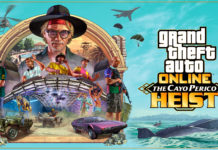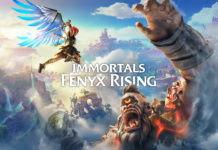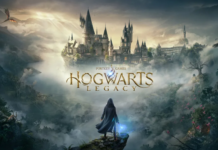Every time developers try to gain video games credibility, an army of critics lays waste to their efforts. Games are for kids, they say, unless they're too violent to be played by any civilized person. They're temporary, bound for boxes and basements at a moment's notice. They're the stuff of garage sales. Not that Dickens would ever meet a reduced price sticker, or Van Gogh would ever have his art reprinted and sold on coffee mugs.
Whatever the reason, video games receive less respect than novels, films, and fine art. They're not worth celebrating or studying, even though their ideas reach and influence millions of people. Put that same creativity on a canvas or capture it in a movie, though, and critics will talk. If they could only look past the annual blockbusters like they look past popular books for literature and popcorn movies for classic films, the medium of video games could progress.

Games like To the Moon, an indie RPG/adventure title from Freebird Games, represent the medium's potential. Video games as art is a tricky argument to settle, but the fact that critics are denying games the genuine ability to tell stories is unacceptable. Studies have acknowledged that playing video games is a productive way of spending time, and I'm betting more so than watching television. So why can television and movies tell stories and not video games? This isn't Skyrim, where you shape the world and follow your own destiny, but even telling your own story is still telling a story.
To the Moon involves more watching than playing. For 4–5 hours, players help two scientists named Dr. Eva Rosalene and Dr. Neil Watts fulfill the last wish of a dying man: He wants to go to the moon. By jacking into an amazing machine, they can access his memories and rewire them so that he wants to go to the moon bad enough to actually achieve that dream—at least in his mind. But first they need to understand his motivation so that they can plant that unshakable ambition (think Inception) in early life. The characters solve that mystery by traveling backwards in time, from the client's old age to his childhood.
Essentially, the player becomes a spectator as the story unfolds in reverse. Even though players direct the two scientists for most scenes, making them find mementos and complete puzzles, they can't prevent them from doing whatever they deem necessary. There was one instance late in the game when I was mad about a decision Eva was making, much to Neil's frustration, as well. I couldn't do anything to stop her, and neither could Neil. The situation actually reminded me of a movie I saw recently and how upset I was over the direction the story was heading, only to feel relieved when the plot aligned itself again with my expectations. Taking control away from players and forcing them to accept events is a feature that shows up in a lot of games, including ones that emphasize gameplay.

To the Moon is a wonderfully told story. If stories need characters to be stories, then the game satisfies that requirement. Eva and Neil exhibit strong personalities, while the old man Johnny and his wife have their own unique histories, as do their relatives and close friends. These aren't empty-headed NPCs following a programmed course without meaning. These characters shoulder responsibilities, desires, regrets, and grievances. They've made mistakes and drifted apart and faced challenges that we can relate to, especially in our country today, when economic hardship abounds.
And if stories need setting and locations that hold importance to the characters, then the game has that, too. Like the lighthouse, or the house built near it on a cliff, or Johnny's childhood home. These aren't just random places. They're locked into the old man's memories for a reason.
If stories need symbols, too, then To the Moon provides them in abundance. Part of the brilliance of the game is discovering the origin of mementos and learning their importance as you relive Johnny's memories. Part of that same brilliance lies in forming your own connections because not everything is explained to the player, who could see something a dozen times and not make sense of it till the end. The story and all its little pieces tie together so well that there's little that lacks purpose.

According to its definition, storytelling is the art of conveying a sequence of events in words, images, and sounds for entertainment, education, moral, or cultural reasons and is supported by characters, plot, and a narrative point-of-view. To the Moon contains all of that, if not more. It has words (dialogue), images (video and symbols), and sounds (an original soundtrack and sound effects). It has characters and a plot, and it's told through the scientists' perspectives, which isn't necessarily the view of the old man they're helping. Each section of the game serves to advance the story, and no side quests slow it down. The characters make their own decisions, and the outcome can't be changed. If To the Moon isn't an acceptable example of storytelling, then no film or novel can be. Whether it's art, on the other hand, is for the players to decide.










